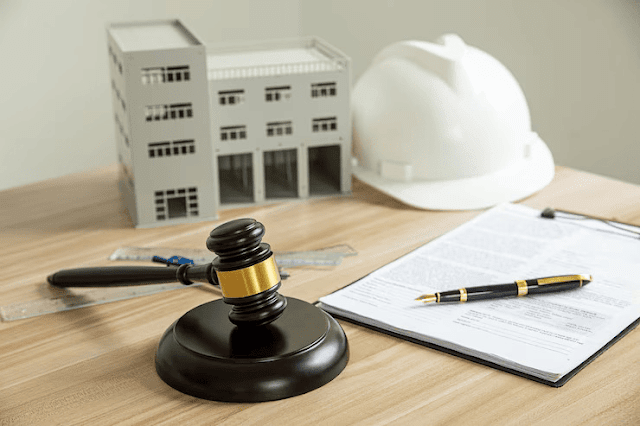When Projects Go Wrong: A Contractor’s Guide to Construction Litigation
Construction projects are complex by nature, balancing tight deadlines, budgets, subcontractors, and ever-changing client expectations. Despite best efforts, things can and do go wrong. Disputes may arise over delays, non-payment, workmanship quality, or contract breaches. When disagreements escalate beyond negotiation, litigation may become necessary. In these situations, having an experienced Construction Litigation Attorney on your side is essential. This guide is designed specifically for builders and contractors who need legal support when construction projects go off course. From understanding your legal risks to developing strategies for defense, we’ll walk you through what to expect and how to protect your business.
Common Reasons Contractors Face Litigation
Construction litigation can stem from many sources, including:
- Breach of contract: Disputes over terms, payment schedules, or scope of work.
- Construction defects: Claims involving structural issues, water intrusion, or material failures.
- Delays: Accusations of missed deadlines or disruptions that affect project timelines.
- Payment disputes: Non-payment or late payment from owners, or disputes with subcontractors.
- Change order disagreements: Unapproved or improperly documented changes leading to conflict.
- Worksite injuries or safety violations: Personal injury claims involving workers or third parties.
While litigation is often a last resort, it’s critical to know what steps to take when you're facing—or trying to avoid—a legal dispute.
Step 1: Know Your Contracts
The first and most important tool in avoiding and defending against litigation is a well-drafted contract. A Construction Litigation Attorney can help you:
- Draft clear, enforceable contracts with defined scopes, timelines, and payment terms.
- Include clauses for dispute resolution (mediation, arbitration, jurisdiction).
- Clearly outline procedures for change orders and claims.
If a dispute arises, the contract will be the first document reviewed in any legal proceeding. Make sure it protects you, not just your clients.
Step 2: Keep Detailed Project Records
Documentation can make or break your case. Maintain thorough and organized records for every project, including:
- Signed contracts and change orders
- Daily logs and progress reports
- Emails, texts, and meeting notes
- Inspection and permit records
- Photographs of work completed
These records provide critical evidence if litigation occurs and help demonstrate that you followed professional standards.
Step 3: Respond to Legal Notices Quickly
If you receive a demand letter, a Notice of Claim, or a formal complaint, don’t delay. Failing to act promptly can result in default judgments or limit your legal options. Contact your insurance provider and consult a Construction Litigation Attorney as soon as possible to evaluate your liability and develop a response strategy.
An attorney can also help you navigate California’s specific construction laws, such as the Right to Repair Act (SB 800), which outlines the procedures for defect claims.
Step 4: Understand the Role of a Construction Lawyer in California
When facing a legal dispute, it’s vital to work with someone who understands the local laws, building codes, and court systems. A knowledgeable construction lawyer in California brings experience in state-specific regulations that impact litigation, such as:
- Statutes of limitation and repose for construction claims
- Licensing requirements for contractors and subcontractors
- Comparative fault laws, which may reduce your liability if others contributed to the problem
- Requirements for mandatory mediation or arbitration
Your lawyer will help you understand the strength of your position and guide you on whether to settle, mediate, or go to trial.
Step 5: Develop a Litigation Strategy
If litigation is inevitable, your attorney will work with you to build a solid case. This includes:
- Gathering evidence, expert reports, and witness statements
- Preparing for depositions and discovery
- Evaluating the risks and benefits of different legal tactics
- Exploring opportunities for settlement or alternative dispute resolution
Sometimes litigation involves not only defending your actions but also pursuing your claims, such as seeking payment from a delinquent client or enforcing contract terms against a subcontractor.
Step 6: Consider Alternative Dispute Resolution (ADR)
Litigation is often costly and time-consuming. Many construction contracts require or recommend mediation or arbitration as a first step before court. These methods can be faster, more confidential, and less expensive than going to trial.
- Mediation allows both sides to discuss the dispute with a neutral third party to reach a mutual agreement.
- Arbitration is more formal but still typically faster than litigation and results in a binding decision.
An experienced attorney can help determine if ADR is in your best interest and represent you throughout the process.
Step 7: Review and Strengthen Risk Management Practices
After resolving a legal dispute, take the opportunity to reassess your business practices. A Construction Litigation Attorney can help you:
- Review contracts and modify language to reduce ambiguity
- Improve documentation practices across projects
- Implement stronger subcontractor agreements
- Ensure compliance with California construction law and safety regulations
This proactive approach will help reduce the chances of future litigation and strengthen your reputation in the industry.
Summary
Construction litigation can be a significant threat to your business, reputation, and financial health. Whether you're facing a claim related to workmanship, payment, or contractual obligations, the best defense starts with early legal guidance and a strong understanding of your rights.
By working closely with an experienced Construction Litigation Attorney, you can navigate the complexities of construction law and resolve disputes effectively. For contractors operating in California, partnering with a skilled construction lawyer in California is especially important to ensure compliance with state-specific rules and regulations.
If you’re currently dealing with a construction dispute—or want to prepare your business for the possibility—don't wait until it’s too late. Legal guidance today could save you from costly litigation tomorrow.

.png)
Comments
Post a Comment